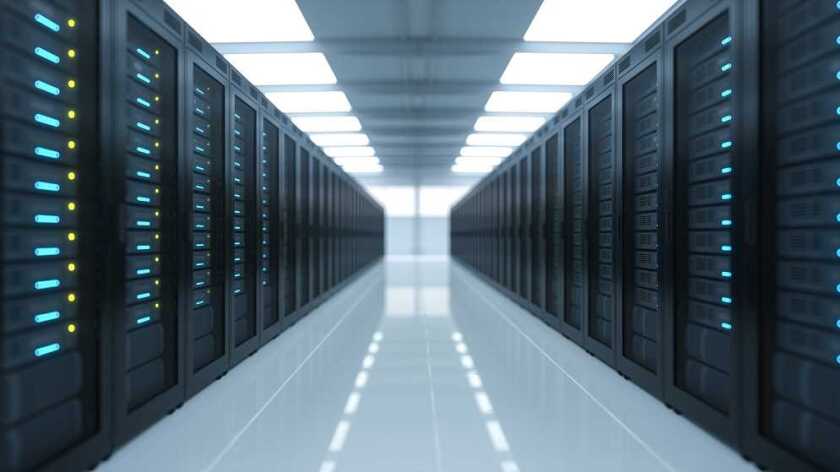Cybersecurity Snapshots #35 - The Impact of Global Warming on Supercomputers
Cybersecurity Snapshots #35 -
The Impact of Global Warming on Supercomputers
 Managers at High-Performance Computing (HPC) facilities which include both supercomputers and data centers, are waking up to the costly effects of climate change. Natalie Bates, chair of an HPC energy efficiency working group set up by Lawrence Livermore National Laboratory (LLNL), stated that HPC facilities have heavy demands for cooling and a massive appetite for energy, which means weather extremes are making the design and location of supercomputers far more difficult.
Managers at High-Performance Computing (HPC) facilities which include both supercomputers and data centers, are waking up to the costly effects of climate change. Natalie Bates, chair of an HPC energy efficiency working group set up by Lawrence Livermore National Laboratory (LLNL), stated that HPC facilities have heavy demands for cooling and a massive appetite for energy, which means weather extremes are making the design and location of supercomputers far more difficult.
In 2018, during a drought, the California wildfire known as the Camp Fire burned 620 square kilometers of land, reducing several towns nearly to ashes and killing at least 85 people. The disaster also had an effect far from the flames at a supercomputer facility operated by Lawrence Berkeley National Laboratory (LBNL) 230 kilometers away. The National Energy Research Scientific Computing Center (NERSC) typically relies on outside air to help cool its hot electronics. However, smoke and soot from the fire forced engineers to cool recirculated air, driving up humidity levels. Humidity can also threaten computers themselves, as NERSC discovered during a second fire. As interior air was recirculated, condensation inside server racks led to a blowout in one cabinet. Hot and dry weather took a toll again a year later. California utilities cut NERSC’s power for fear that winds near LBNL might blow trees into power lines, sparking new fires. Although NERSC has backup generators, many machines were shut down for days. NERSC, for its next supercomputer, set to open in 2026, is planning to install power-hungry chiller units, similar to air conditioners, that would both cool and dehumidify outside air. Nicolas Dubé, the chief technologist for Hewlett Packard Enterprise’s HPC division, stated that creating chiller units for supercomputers comes with massive costs, and such adaptations are motivating some HPC centers to migrate to cooler and drier climates, places like Canada and Finland. Nicolas stated that HPCs will not be able to build in some locations in the future, since it just doesn’t make sense. Natalie Bates, thinks the opposite and states that running from climate change can be futile. For example, in 2012, the National Center for Atmospheric Research opened a supercomputer site in Cheyenne, Wyoming, to take advantage of its cool, dry air. However, climate change has led to longer and wetter thunderstorm seasons there, hampering evaporative cooling. In response, the Wyoming center added a backup chiller. Bates noted that no matter where an HPC is located, you now have to build infrastructure to meet the worst possible conditions, which gets expensive.
Some HPC facilities find themselves stuck and cannot move. For example, the supercomputers at LLNL are used to simulate the explosions of nuclear weapons. Chief Engineer Anna-Maria Bailey noted that the cost of relocating specialized personnel could be prohibitive, and LLNL’s California site is a highly secure facility. Instead of moving the supercomputers, LLNL is studying the possibility of moving its computers underground. Bailey noted that humidity and temperature control would be a lot easier underground.
Climate change is also threatening the lifeblood of these HPC facilities, electricity. HPC centers consume up to 100 megawatts of power, as much as a medium-sized town. Meanwhile, hotter temperatures can increase power demands by other users. During California’s heat wave this past summer, when air-conditioning use surged, LLNL’s utility told the facility to prepare for power cuts of 2 to 8 megawatts. Although the cuts did not happen, it was the first time the laboratory was asked to prepare for non-voluntary cuts. Many HPC facilities are heavy users of water too, which is piped around components to carry away heat. Water will grow scarcer in the western United States as droughts persist or worsen. To counter this, Jason Hick, LANL program manager, noted that a decade ago, Los Alamos National Laboratory in New Mexico invested in water treatment facilities so its supercomputers could use reclaimed wastewater rather than more precious municipal water.
Although droughts and rising temperatures may be the biggest threats, a RIKEN HPC facility in Kobe, Japan, must contend with power outages because of storms, which are expected to intensify with global warming. A high-voltage substation was flooded in 2018, cutting RIKEN’s power for more than 45 hours. Similarly, a lightning strike on a power line this year knocked the facility out for about 15 hours. Fumiyoshi Shoji, who directs operations and computer technologies, stated that the center’s 200 projects span fields such as materials science and nuclear fusion. Shoji noted that these research projects would stall if their systems were unavailable.
As climate change is expected to worsen, academia and industry need to discuss the effect supercomputers have on the environment and how environmental factors affect supercomputers. Bates noted that future supercomputers will need to be constructed in ways that will allow them to cut performance, and the need for cooling and power, during bouts of bad weather.